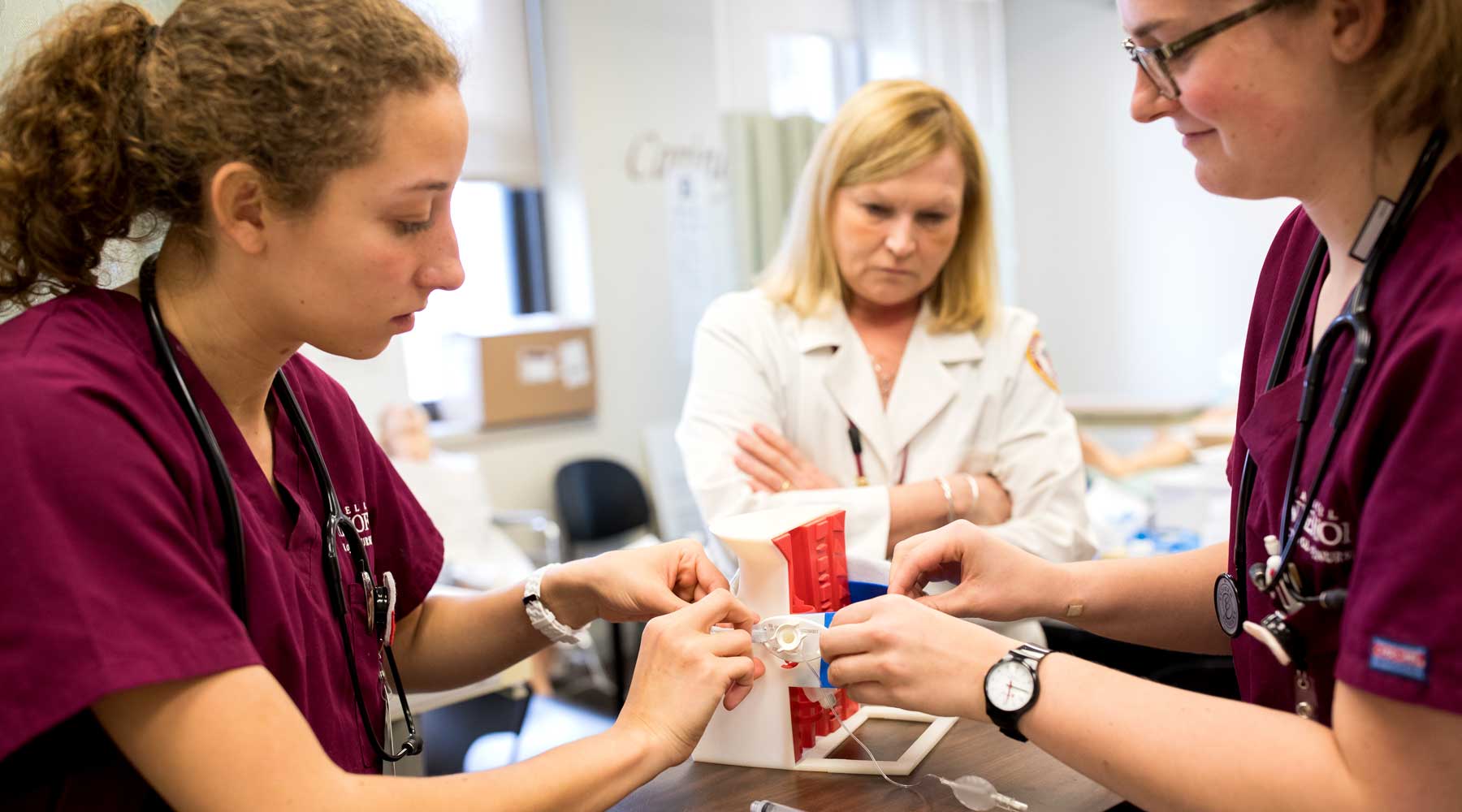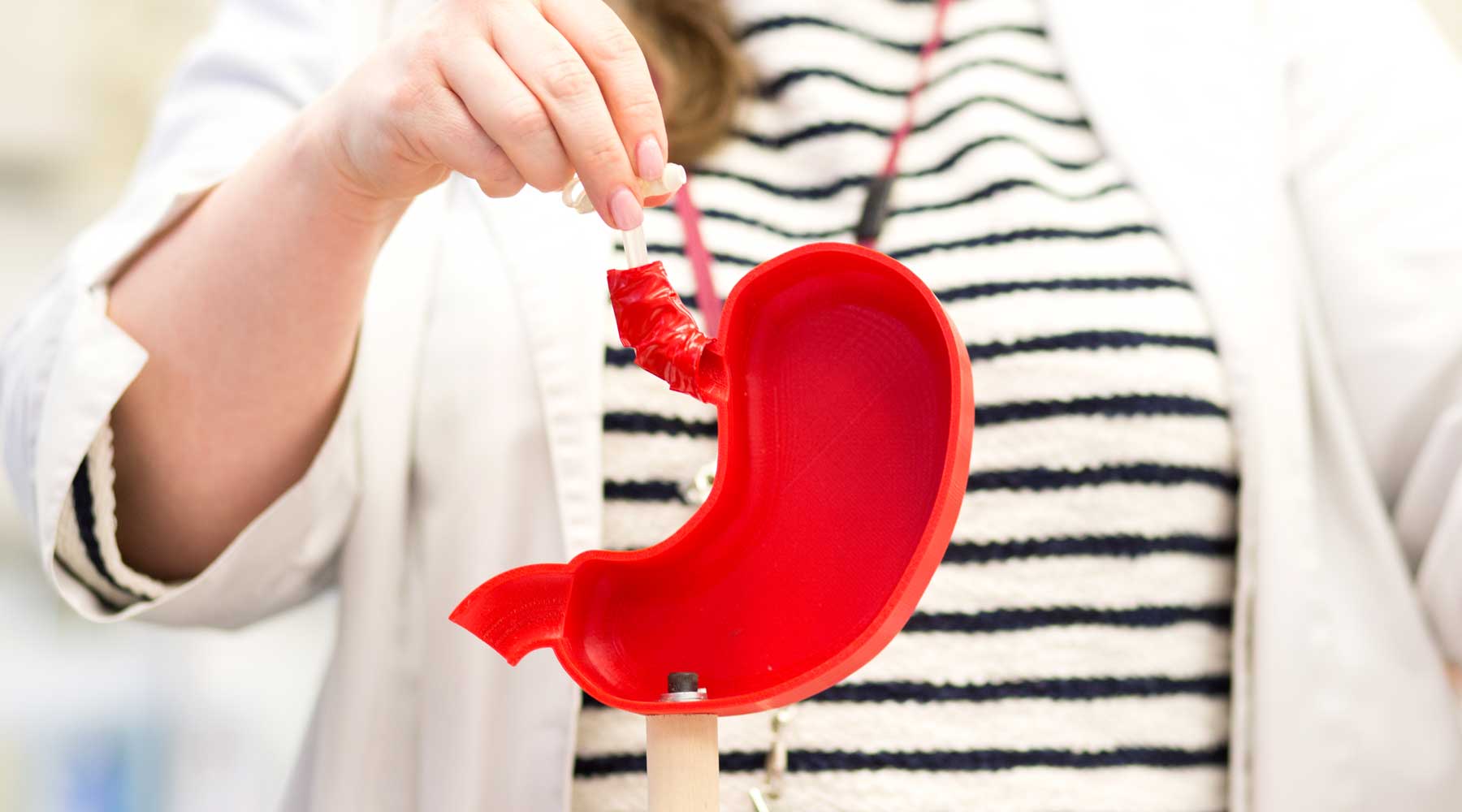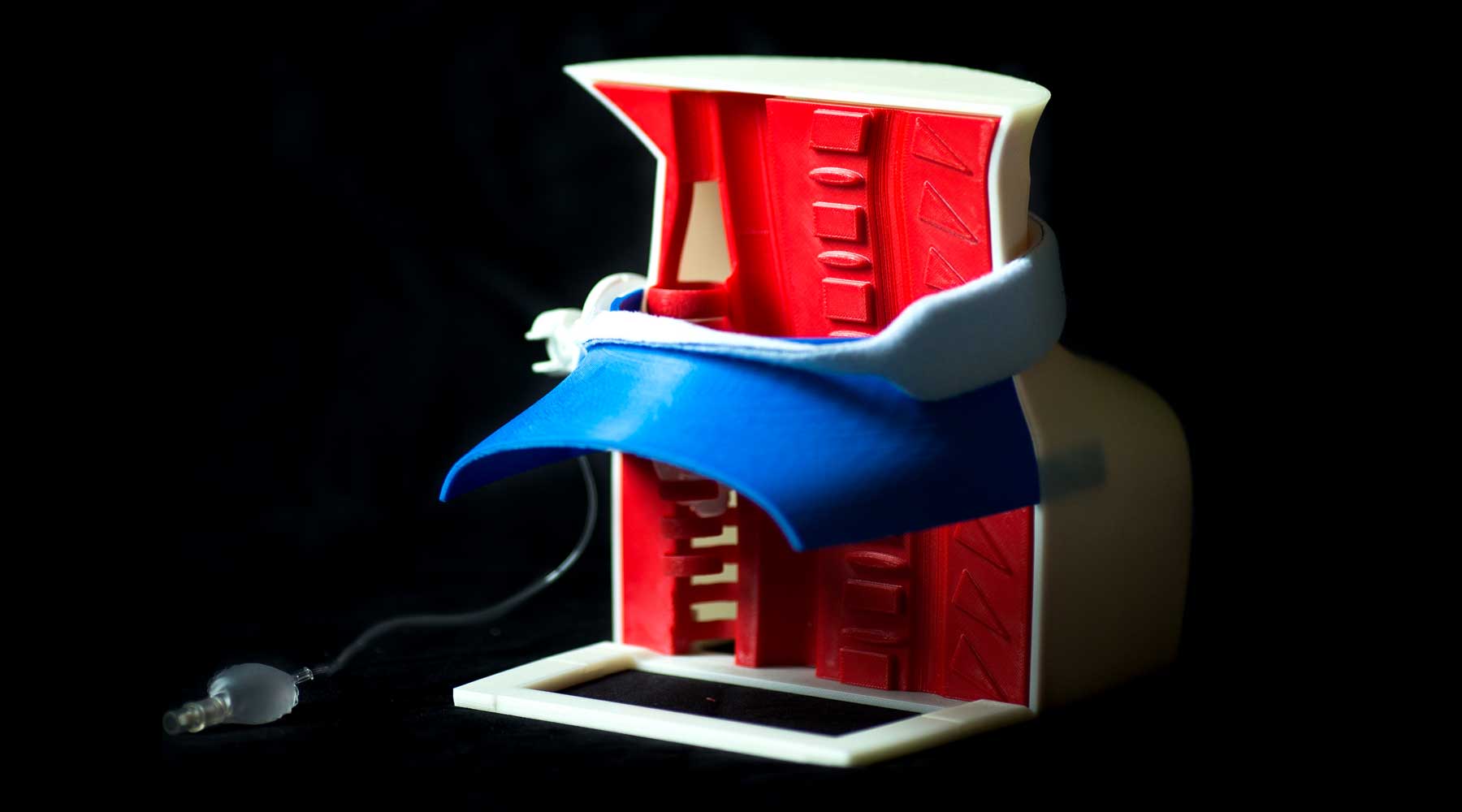Clinical Instructor Julie Johnson, MSN, RN, demonstrates how to insert a feeding tube into a stomach by using a 3D-printed anatomical model during a Clinical Simulation Learning Lab in Mundelein Center. (Photo: Lukas Keapproth)
Designing tools, saving lives
Loyola engineering students design models to support nursing students
By Tasha Neumeister
Up on the third floor of Cuneo Hall, first-year engineering students are getting a real-life professional experience. With the help of industry-standard software, freshmen help solve problems for various campus departments including designing and testing products. Once the design is complete, a 3-D printer brings their design to life. In one such project, Loyola engineering students have developed anatomical models for Marcella Niehoff School of Nursing students. This collaboration—that started in 2015—is part of a project-based curriculum that helps students link concepts to real-world practice.
“The best way to retain engineering students is to teach methods to solve a problem. Students who are engaged in this way will stay in engineering.” Gail Baura, PhD, director of Engineering Science

Simulation Instructor Joanne Dunderdale, MSN, RN, demonstrates to sophomores Christina Derat (left) and Piper Burnside (right) how to properly insert an inner cannula into an endotracheal tube for a tracheostomy by using a 3D-printed anatomical model. (Photo: Lukas Keapproth)
Baura, who teaches the Introduction to Engineering Design course, said a journal study featured in Science Magazine found students who participated in open-ended design projects during freshman year were more likely to still be in their programs well into their second and third year.
“It’s important for freshmen to understand that that engineering is more than solving equations in a textbook. Solving real problems, is much more exciting,” said Baura.
The exciting work of Loyola’s engineering students is being put to use. In the Lake Shore Campus nursing simulation lab, students learn how to care for a patient with a feeding or breathing tube with the help of an anatomical 3-D model designed by a group of Baura’s students.
This is a 3D-printed anatomical model of a neck with an endotracheal tube used in the Clinical Simulation Learning Lab for nursing students to see how to care for tubes inserted into air passageways. (Photo: Lukas Keapproth)
“Tell me where the tracheostomy goes? Where’s the trach?” said Joanne Dunderdale, MSN, RN, Simulation Instructor, as she demonstrated how to care for a tracheostomy tube.
Sophomore Piper Burnside points toward the throat of a 3-D model with an endotracheal tube attached. Dunderdale explains how the tube is positioned to go through your trachea, not your esophagus, so you can breathe.
Dunderdale definitely sees this collaborative partnership amongst students being a win-win for all involved.
“These tools are so good for our students to visualize,” she said. “To have the engineering students do this serves two purposes: They’re getting an educational experience and our nursing students are getting it—they’re understanding and finally seeing where things like these tubes go.”





